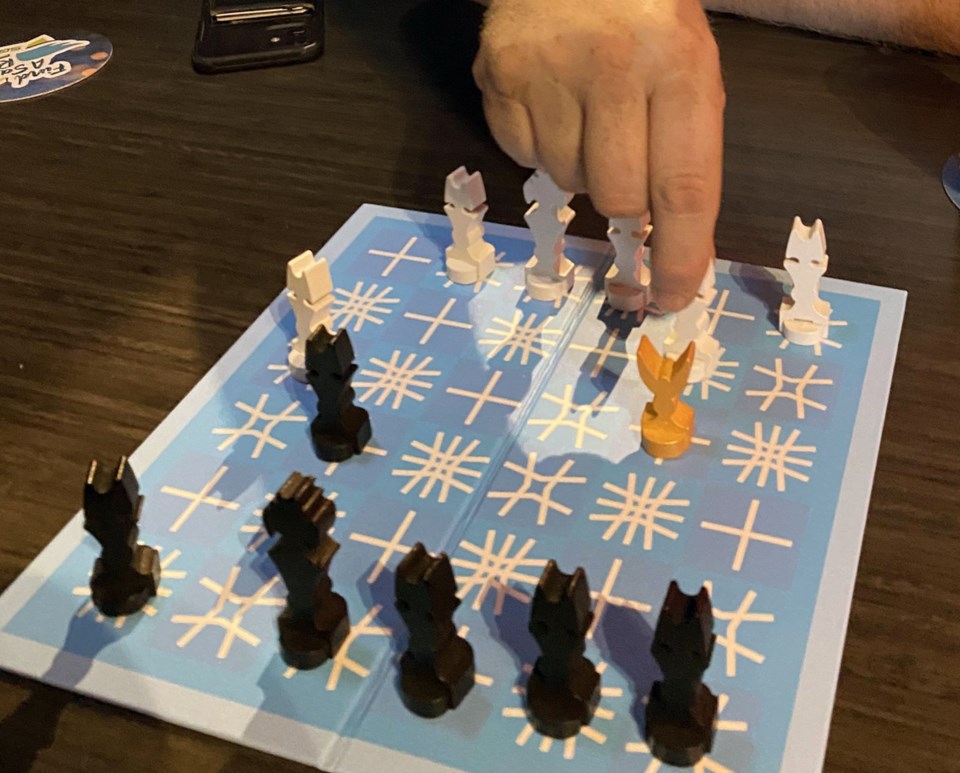EDITOR's NOTE: The Meeple Guild is providing additional reviews over this holiday week, so check back daily for new game reviews.
YORKTON - A couple of weeks back we reviewed Yoxii.
You may recall we loved it aesthetically and found enough in its rules to suggest it as an entry level-style abstract strategy game.
This week we turn to Mana, a sister game to Yoxii.
Mana is by designer Claude Leroy, and the current edition from www.cosmoludo.com is packaged similar to Yoxii, so it’s packaging is striking, the insert fine, and the pieces wonderful wood.
Game play here has pieces moving based on symbols on the play board, which is not a new idea, but still rarely used. An example of a game using the idea on the space affecting movement is All the King’s Men which was released back in 1970, and even more similar in this case Samurai in 1975.
Since the mechanic is not overly utilized it does push players to think a bit differently, which is a good thing. Here being aware of the spaces and which pieces can go where is pretty important.
In Mana players each have five ronin, and a daimio – it’s a Japanese theme but that really doesn’t come through except in the piece names.
The pieces are wood and nicely made.
The goal, get the opponent’s daimio.
Adding a level to Mana is the ‘Mana-bird’ piece.
A player moves a piece the number of the spaces on the square it is on. Then they move the bird to a square matching where their piece just landed on. The bird it becomes apparent has some impact as a barrier at least.
The opponent then must move a piece that starts from a space matching where the ‘bird’ sits.
There are a few ‘special situation’ rules which when needed initially seem a bit clunky – especially so on a small footprint such as Mana.
But, the exceptions are not onerous to learning the game, just some added rules to remember. Interestingly, what depth emerges in Mana lies in the ‘exception rules’ whereby a player may regain a lost ronin, or make back-to-back moves, or have a free move which can be huge.
Much like Yoxii, Mana is not a lifestyle game – one you play hundreds of times to become a ‘master’, although Mana is deeper than its sister game.
It is also perhaps more familiar because you are out to capture a certain piece to win – like the familiar king capture in chess. There is comfort in that similarity.
In the end Cosmoludo has a style in this series of abstract strategy games – there are five so far and a new one expected in 2024 – and it starts with good looks which Mana certainly has.
Game play is on the easy-to-learn side of things with just enough to recommend as a filler-style abstract strategy offering, with surprising depth to explore.






